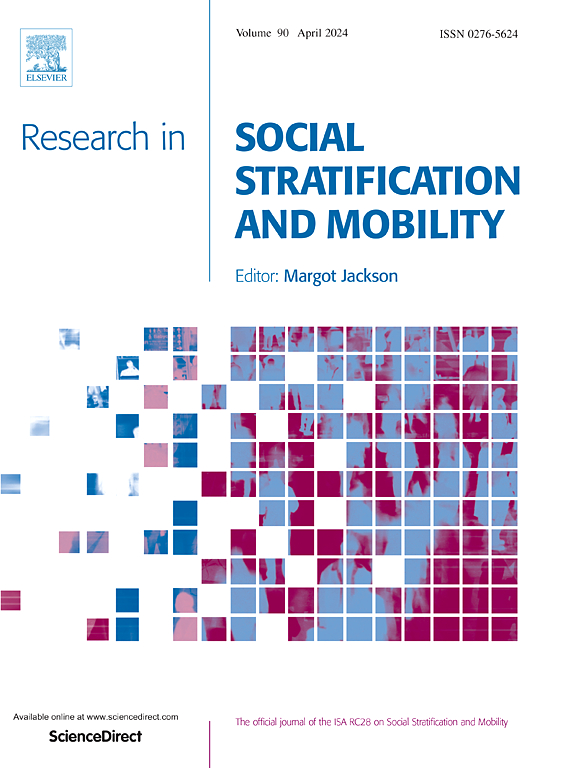空间不平等能解释智利高等教育不匹配的社会差异吗?
IF 2.7
1区 社会学
Q1 SOCIOLOGY
引用次数: 0
摘要
进入高等教育的社会弱势学生通常选择的课程比他们预期的要少,导致劳动力市场的结果下降。根据2018年智利高等教育一年级入学学生的行政数据,本研究解决了学生学业成绩与学位在劳动力市场上的结果不匹配带来的社会经济差异,重点关注地理邻近的作用。与学生成绩相匹配的学位的地理分布不均,对于理解智利高等教育中高度的社会经济差异至关重要。我指出,即使学生在离当地50公里的地方攻读最匹配的学位,这些差异实际上也不会改变。此外,我发现学位相近的学生之间没有社会经济差异,而离合适的学位很远的学生之间的社会经济差异很大。本研究强调了在高参与高等教育体系中解决不匹配差异的地理挑战。本文章由计算机程序翻译,如有差异,请以英文原文为准。
Do spatial inequalities explain social disparities in mismatch in Chilean higher education?
Socially disadvantaged students entering higher education often enrol in less selective programs than they could aim for, resulting in diminished labour market outcomes. Drawing from administrative data on first-year entrants to higher education in Chile in 2018, this study addresses socioeconomic disparities in the mismatch between students' academic achievement and the labour market outcomes of their degrees, focusing on the role of geographic proximity. The uneven geographic access to degrees aligning with students' achievement is critical to understanding the high socioeconomic disparities in Chilean higher education. I show that these disparities would remain practically unchanged even if students enrolled in their best-matched degrees within 50 kilometres of their locality. Moreover, I find no socioeconomic disparities between students with nearby matching degrees, whereas high differences arise between students residing far away from suitable options. This study highlights the geographical challenges in addressing mismatch disparities in a high-participation higher education system.
求助全文
通过发布文献求助,成功后即可免费获取论文全文。
去求助
来源期刊
CiteScore
7.80
自引率
6.00%
发文量
46
期刊介绍:
The study of social inequality is and has been one of the central preoccupations of social scientists. Research in Social Stratification and Mobility is dedicated to publishing the highest, most innovative research on issues of social inequality from a broad diversity of theoretical and methodological perspectives. The journal is also dedicated to cutting edge summaries of prior research and fruitful exchanges that will stimulate future research on issues of social inequality. The study of social inequality is and has been one of the central preoccupations of social scientists.

 求助内容:
求助内容: 应助结果提醒方式:
应助结果提醒方式:


